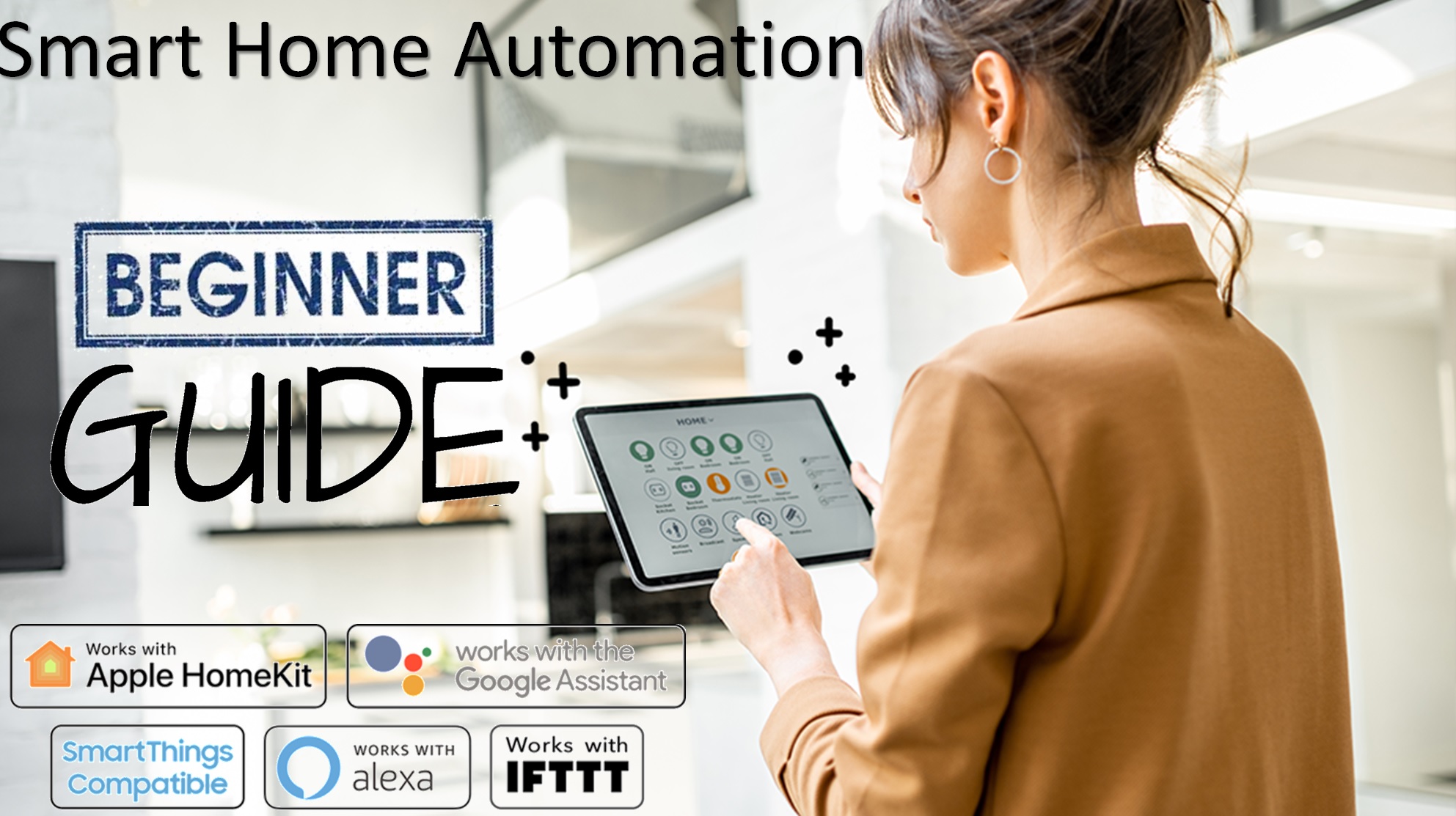Smart Home Evolution
Smart home automation has revolutionized the way we live, turning our homes into intelligent ecosystems that adapt to our needs and preferences. As technology continues to advance, the possibilities for smart home automation are boundless. This extensive guide aims to provide an in-depth understanding of smart home automation, catering to beginners and enthusiasts alike. From the basics to advanced concepts, this comprehensive exploration will empower you to transform your living space into a connected and intelligent haven.
Understanding Smart Home Automation
Defining Smart Home Automation
Smart home automation is the integration of technology into various aspects of home living, lighting, climate control, security, entertainment, and more. The primary goal of smart home automation is to create an intelligent and interconnected environment where various devices can communicate, coordinate, and be controlled remotely, often through a central hub or a mobile device.
Core Components of Smart Home Automation
Dive into the key components that form the backbone of smart home automation. Explore smart hubs, sensors, actuators, and connectivity protocols, laying the groundwork for a robust and interconnected smart home ecosystem.
- Sensors and Actuators: These are devices that sense changes in the environment (such as motion, temperature, or light) and act upon those changes. For example, motion sensors can trigger lights to turn on when someone enters a room.
- Connectivity Protocols: Devices in a smart home typically communicate through wireless protocols like Wi-Fi, Zigbee, Z-Wave, or Bluetooth. These protocols enable seamless communication and coordination among different devices.
- Smart Hubs: Centralized hubs or controllers serve as the brain of a smart home, connecting and managing various smart devices. Examples include Amazon Echo, Google Home, and dedicated smart home hubs.
- Smart Devices: These encompass a wide range of devices such as smart thermostats, smart lighting, smart security cameras, smart door locks, smart appliances, and more. These devices can be controlled remotely, often through smartphone apps or voice commands.
- Automation and Integration: Smart home automation involves setting up automated routines or scenarios where devices work together based on pre-defined rules. For instance, lights can automatically dim when you start watching a movie, or the thermostat can adjust based on your daily schedule.
- Voice Control Systems: Many smart homes incorporate voice control systems like Amazon Alexa or Google Assistant. This allows users to control various devices using voice commands, adding an additional layer of convenience.
Essential Components for Smart Home Beginners
Choosing the Right Smart Hub
Selecting the right smart hub is crucial for a seamless and effective home automation experience. The smart hub serves as the central command center, connecting and coordinating various smart devices in your home. Popular choices like Amazon Echo, Google Home, and SmartThings offer user-friendly interfaces, compatibility with a wide range of devices, and robust connectivity protocols. Consider your specific needs, the types of devices you plan to integrate, and the overall ecosystem compatibility before making a decision. A well-chosen smart hub ensures smooth communication between devices, facilitates automation, and enhances the overall efficiency of your smart home ecosystem.
Initiating with Smart Lighting Solutions
Your smart home journey often begins with smart lighting solutions. Smart bulbs, switches, and plugs introduce a new level of control and convenience to illuminate your living space. With these intelligent lighting options, you can remotely adjust brightness, set schedules, and even change colors to create personalized atmospheres. Smart lighting not only enhances the ambiance but also lays a foundation for further home automation. Whether you’re looking to improve energy efficiency, customize lighting scenarios, or simply add a touch of modernity to your home, smart lighting is an accessible and impactful starting point for your smart home transformation.
Integrating Smart Thermostats
Integrating a smart thermostat is a pivotal step in elevating your home’s intelligence and energy efficiency. These innovative devices not only allow remote temperature control but also learn and adapt to your preferences over time. With the ability to create personalized schedules and optimize heating or cooling based on your routine, smart thermostats contribute to cost savings and environmental sustainability.
Building a Robust Smart Security System
Robust smart security system is a foundational step towards fortifying your home. By integrating cutting-edge technologies such as smart cameras, doorbell cameras, and motion sensors, you create a comprehensive surveillance network. Smart locks further enhance security, offering remote control over access to your home. All these devices communicate seamlessly through a centralized smart hub, allowing for convenient monitoring and management. The result is a proactive and interconnected security solution that not only protects your home but also provides real-time insights and peace of mind, whether you’re inside or away.
Entertainment with Smart Systems
A smart entertainment system encompasses smart TVs, streaming devices, and audio systems, all seamlessly interconnected. With voice commands or a centralized smart hub, you gain control over your entire entertainment setup. Enjoy personalized content, automate routines like dimming lights for movie nights, and embrace a cohesive, connected experience. By integrating entertainment into your smart home, you not only enhance convenience but also set the stage for a more immersive and enjoyable living space.
Voice Control for Seamless Interaction
Voice control is the foundation of seamless interaction within a smart home. Enabled by systems like Amazon Alexa or Google Assistant, it allows users to effortlessly command and manage various devices using natural language. Whether it’s adjusting the thermostat, dimming the lights, or playing your favorite music, voice control adds a layer of convenience and hands-free operation. This intuitive interface enhances the overall user experience, making smart home automation accessible and enjoyable for users of all ages. With a simple voice command, you can control and customize your smart home environment, transforming the way you interact with your living space.
Setting Up Your Smart Home – Practical Tips for Beginners
Thorough Research and Compatibility
Before making purchases, conduct thorough research on device compatibility with your chosen smart hub. This section guides you on ensuring seamless communication between devices.
Installation and Configuration
Practical tips for installing and configuring smart devices. Step-by-step guides and considerations for each device category, ensuring a smooth setup process.
Automation Rules and Routines
Unlock the full potential of smart home automation by creating automation rules and routines. This section provides examples and practical advice on setting up automation for different scenarios.
Personalization and Voice Commands
Personalize your smart home experience by understanding the intricacies of voice commands. Tailor your commands and preferences for a more personalized and intuitive interaction.
Benefits of Smart Home Automation for Beginners – Unlocking the Potential
Convenience in Daily Living
Explore how smart home automation simplifies daily tasks and routines, providing unparalleled convenience for homeowners.
Energy Efficiency and Cost Savings
Delve into the energy-saving benefits of smart home automation. Understand how devices like smart thermostats and lighting solutions contribute to reducing energy consumption and lowering utility bills.
Enhanced Security and Peace of Mind
The security benefits of smart home systems are vast. Learn how real-time monitoring, alerts, and smart locks contribute to enhanced security and peace of mind.
Personalized Customization
Tailor your smart home experience to suit your lifestyle and preferences. Explore the possibilities of creating personalized automation routines for different scenarios.
Challenges and Considerations for Smart Home Beginners
Addressing Compatibility Challenges
Understand the potential compatibility challenges between devices and how to mitigate them. Practical advice on ensuring a seamless integration process.
Prioritizing Security Measures
Cybersecurity is crucial in smart home automation. Explore best practices for securing your Wi-Fi network and regular device firmware updates to safeguard your smart home.
Budgeting Wisely
Smart home devices come in various price ranges. Learn how to budget wisely and prioritize devices based on your immediate needs and long-term goals.
Future Trends in Smart Homes – Anticipating the Next Wave
Integration of Artificial Intelligence (AI)
Explore the evolving role of AI in smart homes. How machine learning and AI technologies are expected to make homes more intuitive and adaptive.
Advancements in Energy Harvesting Technologies
A glimpse into the future of sustainable smart homes with advancements in energy harvesting technologies, potentially leading to more self-sufficient devices.
Seamless Device Interconnectivity
As technology evolves, anticipate increased interconnectivity between devices. Understand how this trend will contribute to a more seamless and integrated smart home experience.
Conclusion: Embracing a Smarter Future
enter on the journey of smart home automation as a beginner may seem daunting, but the potential benefits are large . As technology continues to advance, the possibilities for smart home automation are limitless, promising homes that are not just connected but intelligent ecosystems that adapt to our needs and preferences. Dive into the world of smart home automation, and witness the transformation of your living space into a haven of innovation, comfort, and efficiency. Whether you’re looking for enhanced convenience, energy savings, or a more secure living environment, smart home automation is the key to unlocking a future where your home works intelligently for you.


